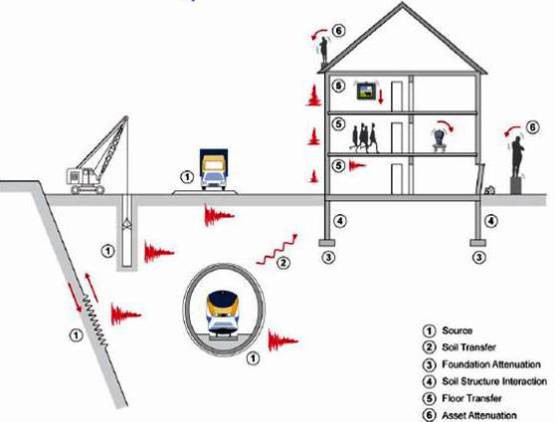Structural vibration in buildings can be detected by the occupants and can affect them in many ways: their quality of life can be reduced as also can their working efficiency. Ground borne vibration from sources such as blasting, piling, machinery or road/rail traffic can be a source of concern for occupants of buildings in the vicinity. This concern can lead to a need to assess the effect of the imposed vibration on the building structure to ascertain whether damage could occur.

It is increasingly recognized that buildings must sustain vibrations, and recognition of this is needed both in design for structural integrity, serviceability and environmental acceptability, and in the preservation of historic buildings. Measurement of vibration in a building is carried out for a variety of purposes:
a) Problem recognition
Where it is reported that a building is vibrating at such a level as to cause concern to occupants, it may be necessary to establish whether or not the levels warrant concern for structural integrity.
b) Control monitoring –
Where maximum permitted vibration levels have been established by some agency and those vibrations have to be measured and reported.
c) Documentation –
Where dynamic loading has been recognized in design and measurements are made to verify the predictions of response and provide new design parameters. These may use ambient or imposed loading. Strong motion seismographs, for example, may be installed so as to indicate whether or not the responses to earthquake warrant changes on operating procedure in a structure.
d) Diagnosis –
Where it has been established that vibration levels require further investigation, measurements are made in order to provide information for mitigation procedures. Another diagnostic procedure is to use structural response to ambient or imposed loading to establish structural condition, for example, after a severe loading, such as an earthquake.
In general, building vibration are measured in acceleration terms. In some cases, such as impulsive events, it may be found convenient to measure in terms of particle velocity so that peak values may be identified.


Vibration Measurement is carried out for various structures such as Industrial structures, Buildings / Structures, Bridges, Chimney / Stacks, Water Tanks, Heritage Structures.
